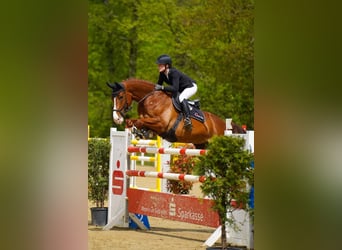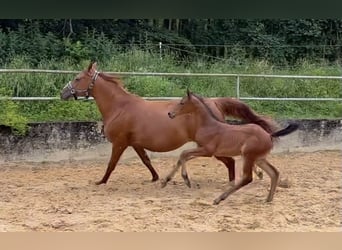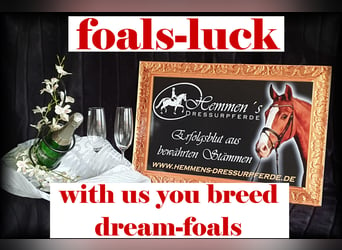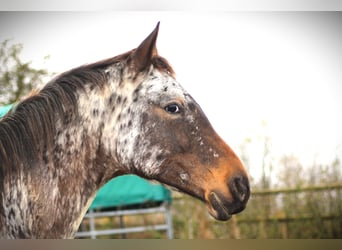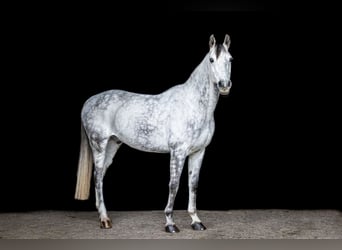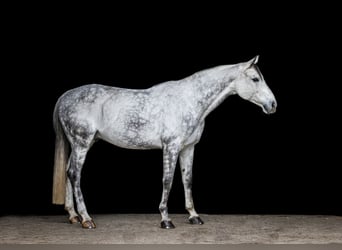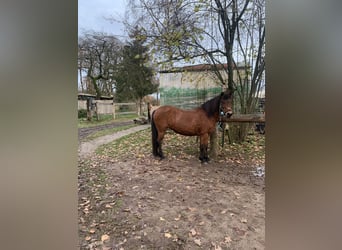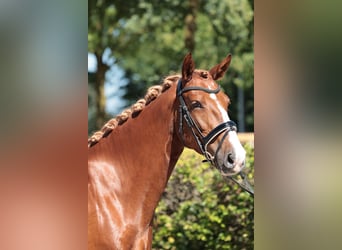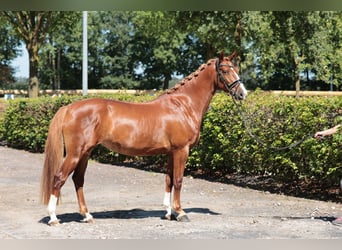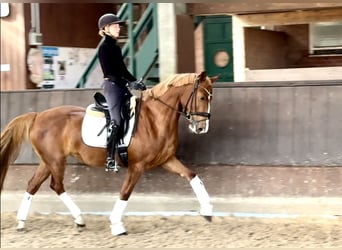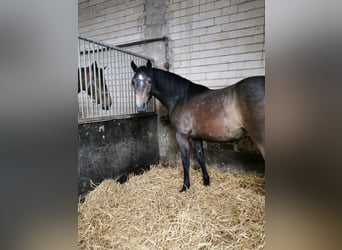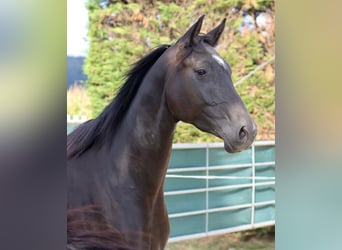DE
German Riding Horse - horses for sale
Page-1-Ad
In addition, interested parties can directly see more information. This significantly increases the number of potential buyers.

DE
DE
DE
DE
DE
DE
DE
DE
DE
DE
DE
DE
DE
DE
DE
DE
DE
DE
DE
DE
German Riding Horses for sale on ehorses
Now known collectively as the German Riding Horse, the regional warmblood breeds of Germany are a much-loved part of the country's cultural heritage. Many equestrians buy a German Riding Horse for equestrian sports as they have an international reputation as talented competition horses. Their kind nature and good health means German Riding Horses also make great all-round family horses. When vendors advertise a German Riding Horse, they are using a name that reflects reliability and robustness in a horse. It also recognises the dedication of local breeders and their joint contribution to German equestrian culture, sport and the economy.
Use and Characteristics of German Riding Horses
While breed standards vary from region to region, people who buy a German Riding Horse know the name indicates excellent temperament and rideability in a saddle horse. There’s plenty of choice for riders too, with all coat colours and markings available, depending on the standards of each individual breed. Height averages from 15.2 hands high (62 inches/158 cm) to 16.1 hands high (67 inches/170 cm). Breeders who sell a German Riding Horse focus on the noted qualities of warmbloods , such as strong joints and elasticity of movement. German Riding Horses have the recognised physical characteristics and appearance of warmbloods too, with kind, intelligent eyes in a noble and characterful head.
Origin and breeding history of German Riding Horses
There are few equestrians today who have not heard of the Hanoverian , the Trakehner , and the Württemberg , along with other famed regional breeds of Germany. Horse breeds have played an invaluable part in the history and culture of each state, as well as collectively, in creating the German Riding Horse. The regional breeds were often established by crossing local semi-feral pony-sized animals with larger and stronger stallions. Royalty and nobility played a key role in the creation of many of these breeds. Among the best-known horse breeders were the rulers of Hanover (who also became the Hanoverian kings of Britain), the dukes of Württemberg, and the Kings of Prussia, who supported and promoted the development of the Trakehner and Westphalian studs.
During late medieval and early modern times, Neapolitan and Spanish horses were particularly favoured as riding horses by European rulers. Draught horses , Arabian and Turkoman horses would also play an important role in several of the German warmbloods . Later influences came from the Thoroughbred and the Cleveland Bay . Most of the German warmblood breeders adapted their horses to meet changing needs, from the relatively light and compact warhorses of the early sixteenth century to the larger and stronger horses required for carriage work and hunting over fences. By encouraging their tenants to become involved in horse breeding, and making stallions available for their mares, German rulers also helped to create a culture of non-royal horse breeders in the regions. This paralleled the importance of private studs in Britain and was partly inspired by the success of the English Thoroughbred and other emerging breeds.
Today, the umbrella term German Riding Horse also embraces the term German Sport Horse , regionally-bred horses that are bred and trained with equestrian sports in mind. German Sport Horses include the Württemberg , the Bavarian Warmblood and the Zweibrucken , along with some breeds that no longer exist independently, such as the Brandenburger , Thuringian , Saxon and Saxony-Anhalt horse. Other German Riding Horses not included in the Sport Horse group include the Holstein , Mecklenburg , Oldenburg , Westphalian and Rhenish , and less well-known breeds, such as the Alpine Dairymen's horse, or Senner .
German Riding Horses in Equestrianism
The term German Riding Horse has been in use since the 1970s. Germany has long had a reputation for the performance of its regional warmbloods in international competitions. They are charismatic horses, which leave a long legacy, both in terms of offspring and of impact. Many people remember the outstanding Westphalian Ahlerich, who was the gold medal winner in the dressage event at the Olympics in Los Angeles in 1984. Over twenty years later, the horses of the gold medal-winning team at the 2008 Olympics in Beijing were all Hanoverians . Outstanding German Riding Horses consistently sell for high prices.
What makes German Riding Horses so successful?
The success of German Riding Horses is testament to the skills of regional breeders over hundreds of years. In order for a horse to be registered in one of the sections of the German Riding Horse studbook, it must meet the registration standards of its own breed. It will then be classified within the German Riding Horse books, dependent on the licensing and testing of its ancestry. Testing and registration standards are rigorous and include performance testing for both stallions and mares, plus proven fertility performance. These standards mean that German Riding Horses remain strong, healthy and active throughout their long lives.































